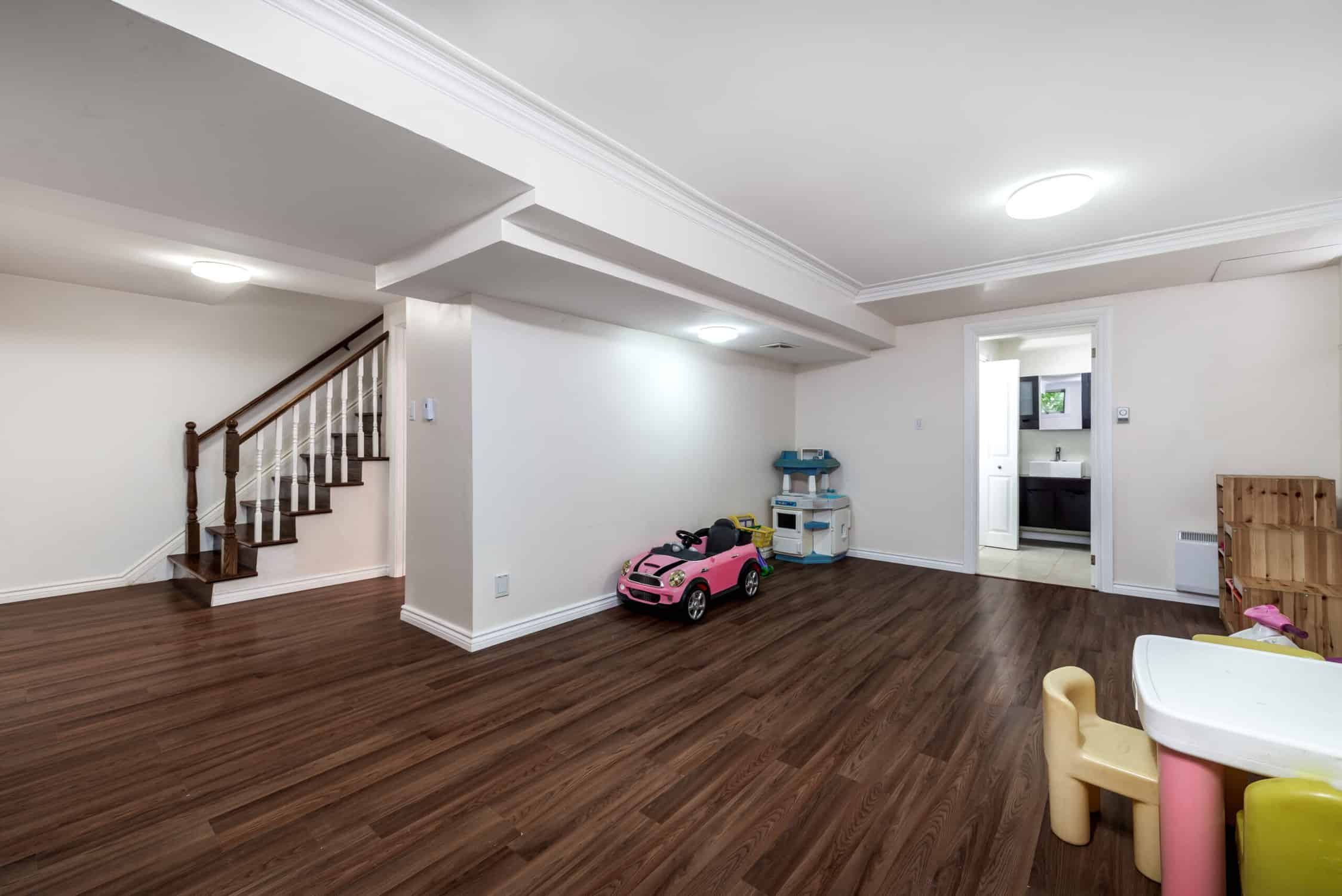When it comes to painting the interior of your house, choosing the right color is of utmost importance. The color you select can have a significant impact on the overall look and feel of your space. It sets the tone, creates an atmosphere, and can even influence your mood. With so many options available, it can be overwhelming to make a decision.
That’s why we have created this comprehensive guide to help you navigate the world of interior house painting and find the best color for your home.
Understanding Color Psychology
Before diving into the process of choosing interior paint colors, it’s essential to understand the psychology behind colors. Colors have the power to evoke emotions and moods, making them a crucial element in creating the desired ambiance in your home.
Different color families have distinct psychological effects. For example:
- Warm colors like red, orange, and yellow are known to create a cozy and inviting atmosphere. They can energize a space and promote feelings of warmth and happiness.
- Cool colors such as blue and green have a calming effect and can create a serene and peaceful environment. They are often associated with relaxation and tranquility.
- Neutral colors like beige, gray, and taupe are versatile and timeless. They provide a blank canvas for other elements in the room and can create a sense of balance and harmony.
- Bold and vibrant colors like purple or teal can add personality and drama to a space. They can stimulate creativity and make a bold statement.
- Pastel colors such as soft pinks, blues, and greens create a gentle and elegant ambiance. They are often used to create a soothing and calming atmosphere.
Understanding the psychological effects of colors can help you choose the right color palette for each room in your house.
Factors to Consider When Choosing Interior Paint Colors
Several factors should be taken into consideration when selecting interior paint colors. These factors include:
1. Natural Lighting and its Impact on Color Perception
The amount and quality of natural light in a room can significantly affect how colors appear. It’s essential to consider the direction of the light source and the time of day when choosing paint colors. Rooms with ample natural light can handle darker or bolder colors, while rooms with limited natural light may benefit from lighter shades.
2. The Size and Layout of the Room
The size and layout of a room can also influence color selection. Lighter colors tend to make a space feel more open and spacious, while darker colors can create a cozy and intimate atmosphere. Consider the dimensions of the room and how you want it to feel when selecting paint colors.
3. Existing Furniture and Decor
Take into account the furniture and decor that already exists in the room. The color of your walls should complement and enhance the overall aesthetic of the space. Consider the color scheme of your furniture, curtains, and artwork when choosing paint colors.
4. Personal Preferences and Individual Style
Ultimately, your personal preferences and individual style should guide your color choices. Consider the mood and ambiance you want to create in each room and select colors that resonate with your taste and personality.
Popular Interior Paint Colors & Their Effects
Now that we have explored the factors to consider when choosing interior paint colors let’s delve into some popular color options and their effects on a space.
A. Neutral Colors
Neutral colors are a popular choice for interior house painting due to their versatility and timeless appeal. They provide a blank canvas for other elements in the room and can create a sense of balance and harmony. Some examples of neutral colors include beige, gray, and taupe.
- How neutral colors create a versatile and timeless look: Neutral colors serve as a backdrop that allows other elements in the room to shine. They create a clean and sophisticated look that can adapt to various design styles.
- The calming effects of beige, gray, and taupe: Neutral colors have a calming effect and can create a sense of tranquility in a space. They provide a soothing backdrop for relaxation.
- Using off-white shades to enhance natural light: Off-white shades, such as ivory or cream, can enhance the perception of natural light in a room. They reflect light and create a bright and airy feel.
B. Warm Colors
Warm colors can create a cozy and inviting atmosphere in a room. They have the power to energize a space and promote feelings of warmth and happiness. Some examples of warm colors include red, orange, and yellow.
- Creating a cozy and inviting atmosphere with warm tones: Warm colors can make a room feel cozy and welcoming. They create a sense of intimacy and can be particularly suitable for living rooms and bedrooms.
- The energizing effects of red and orange: Red and orange are vibrant and stimulating colors. They can energize a space and create a lively atmosphere.
- Using warm yellows for a cheerful ambiance: Yellow is often associated with happiness and positivity. It can create a cheerful and uplifting ambiance in a room. Consider using warm yellow tones in spaces where you want to promote a sense of joy and optimism.
C. Cool Colors
Cool colors have a calming and soothing effect on a space. They can create a serene and peaceful environment, making them ideal for bedrooms, bathrooms, and areas where relaxation is desired. Some examples of cool colors include blue and green.
- Achieving a serene and peaceful environment with cool hues: Cool colors like blue and green have a calming effect on the mind and body. They can create a sense of tranquility and promote relaxation.
- The calming effects of blue and green: Blue is often associated with serenity and can create a sense of calmness in a room. Green is known to evoke feelings of harmony and balance.
- Using pale blues for a refreshing and airy feel: Lighter shades of blue, such as sky blue or baby blue, can create a refreshing and airy feel in a space. They can make a room feel light and open.
D. Bold & Vibrant Colors
If you want to add personality and drama to a room, consider using bold and vibrant colors. These colors can make a statement and create a visually striking space. Examples of bold and vibrant colors include purple, teal, and deep red.
- Adding personality and drama with bold color choices: Bold colors can inject personality and character into a room. They can create a focal point and draw attention to specific areas.
- The stimulating effects of vibrant shades like purple or teal: Vibrant colors like purple or teal can stimulate the senses and create a lively atmosphere. They can add energy and vibrancy to a space.
- Using accent walls to make a statement: If you’re hesitant to paint an entire room in a bold color, consider using an accent wall. An accent wall painted in a vibrant color can create a focal point and add visual interest to the space.
E. Pastel Colors
Pastel colors are soft and soothing, creating a gentle and elegant ambiance in a room. They can evoke a sense of calmness and relaxation. Examples of pastel colors include soft pinks, blues, and greens.
- Creating a soft and soothing ambiance with pastel shades: Pastel colors have a gentle and elegant effect on a space. They can create a serene and tranquil atmosphere.
- The gentle and elegant effects of pastel pinks, blues, and greens: Pastel pinks can create a soft and romantic feel, while pastel blues and greens can evoke a sense of serenity and freshness.
- Using pastels to create a subtle pop of color: If you prefer a more subtle approach to color, pastels can be a great option. They add a touch of color without overpowering the space.
V. Considerations for Different Rooms
Each room in your house has its own unique purpose and function. When choosing interior paint colors, it’s essential to consider the specific needs and desired ambiance for each room. Here are some considerations for different rooms:
A. Living Room
The living room is often the central gathering space in a home. When choosing colors for the living room, consider the following:
- Choosing colors that promote relaxation and conversation: The living room should be a space where you can unwind and engage in conversation. Opt for colors that create a relaxed and inviting atmosphere.
- Coordinating with furniture and artwork: Take into account the color scheme of your furniture and artwork in the living room. Choose colors that complement and enhance the overall aesthetic of the space.
B. Bedroom
The bedroom is a place of rest and relaxation. When selecting colors for the bedroom, keep the following in mind:
- Selecting colors that promote restful sleep and relaxation: Choose calming colors that create a peaceful and tranquil environment. Soft blues, greens, and neutrals are often recommended for bedrooms.
- Creating a cozy and tranquil atmosphere: Use warm and soothing colors to create a cozy and intimate atmosphere in the bedroom. Consider using soft lighting and textures to enhance the ambiance.
C. Kitchen
The kitchen is a space where creativity and nourishment come together. Consider the following when choosing colors for the kitchen:
- Opting for colors that stimulate appetite and creativity: Warm colors like red and orange can stimulate appetite, making them suitable for kitchens. Consider using vibrant colors as accents or in small doses to add energy to the space.
- Complementing the kitchen’s style and design: Take into account the style and design of your kitchen when selecting colors. Choose colors that complement the cabinets, countertops, and backsplash.
D. Bathroom
The bathroom is a place of relaxation and self-care. Consider the following when choosing colors for the bathroom:
- Creating a spa-like atmosphere with soothing colors: Cool colors like blues and greens can create a spa-like ambiance in the bathroom. Consider using soft lighting and natural materials to enhance theserene atmosphere.
- Using light and neutral colors to create a clean and fresh look: Light and neutral colors can make a small bathroom feel more spacious and airy. Consider using shades of white, beige, or light gray to create a clean and fresh look.
E. Home Office
The home office is a space where productivity and focus are essential. Consider the following when choosing colors for your home office:
- Opting for colors that promote concentration and productivity: Cool colors like blues and greens can help create a focused and productive environment. Avoid using distracting or overly stimulating colors.
- Creating a personalized and inspiring space: Choose colors that reflect your personal style and inspire creativity. Consider incorporating accent colors or artwork that motivates you.
VI. Frequently Asked Questions (FAQ)
Q: Can I use multiple colors in one room?
Yes, using multiple colors in one room can add visual interest and depth. Consider using a color scheme with a primary color and complementary or contrasting colors as accents.
Q: How can I test paint colors before committing to one?
Many paint stores offer sample-sized cans of paint that you can use to test colors on your walls. Additionally, you can create a mood board with paint swatches and fabric samples to visualize how the colors will look together.
Q: Should I consider the current trends when choosing paint colors?
While trends can provide inspiration, it’s important to choose colors that you genuinely love and that complement your personal style. Trends come and go, but your home should reflect your taste and personality.
Q: How can I make a small room appear larger with paint colors?
Lighter colors, such as whites, pastels, and neutrals, can make a small room appear larger and more open. Additionally, using mirrors and maximizing natural light can create the illusion of a larger space.
Q: Can I paint the ceiling a different color than the walls?
Yes, painting the ceiling a different color than the walls can add visual interest and create a unique look. Consider using a lighter shade of the wall color or a complementary color for the ceiling.
Conclusion
Choosing the right color for interior house painting is a crucial decision that can significantly impact the look and feel of your home. By understanding color psychology and considering factors such as natural lighting, room size, existing decor, and personal preferences, you can make an informed choice. Whether you opt for neutral tones, warm colors, cool hues, bold and vibrant shades, or pastel colors, each color family has its own unique effects on a space.
Remember to consider the specific needs and desired ambiance for each room when selecting colors. With careful consideration and a bit of creativity, you can transform your home into a space that reflects your style and creates the desired atmosphere.











